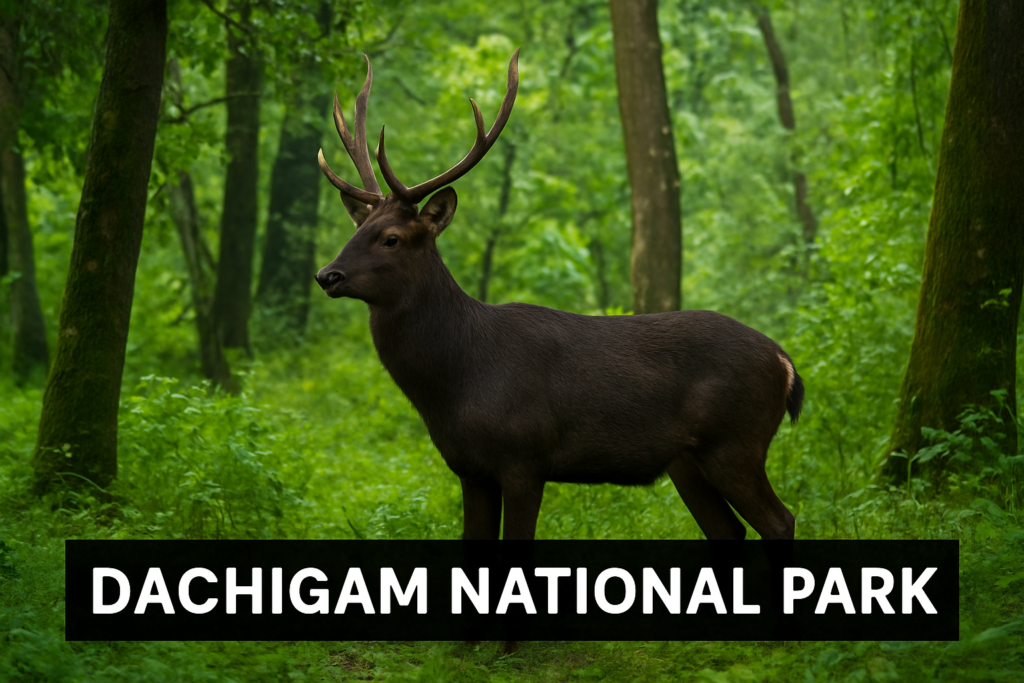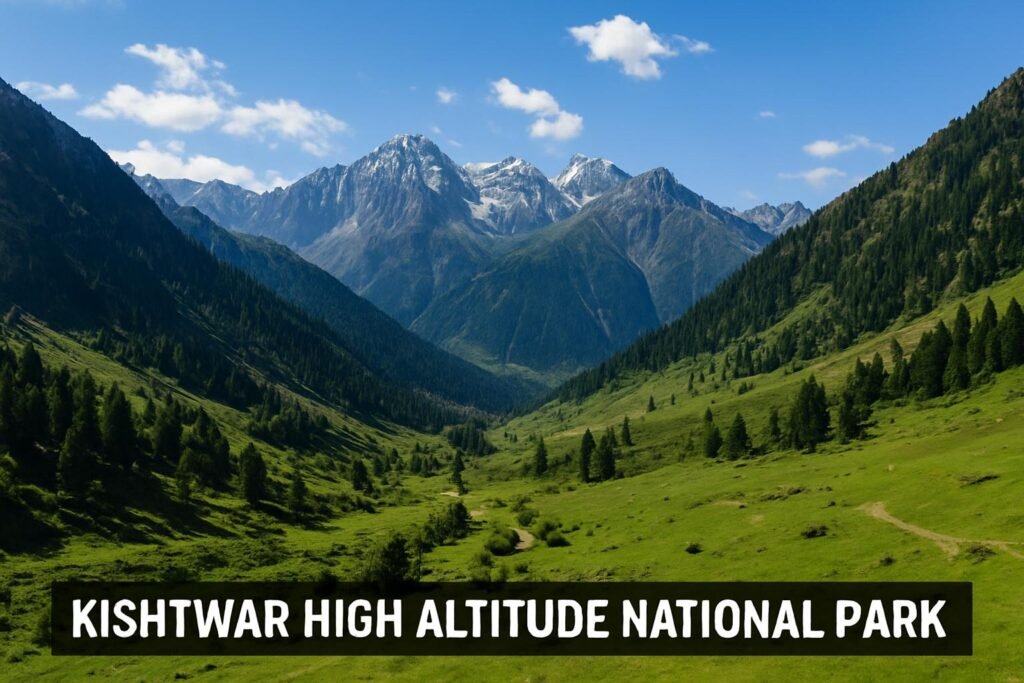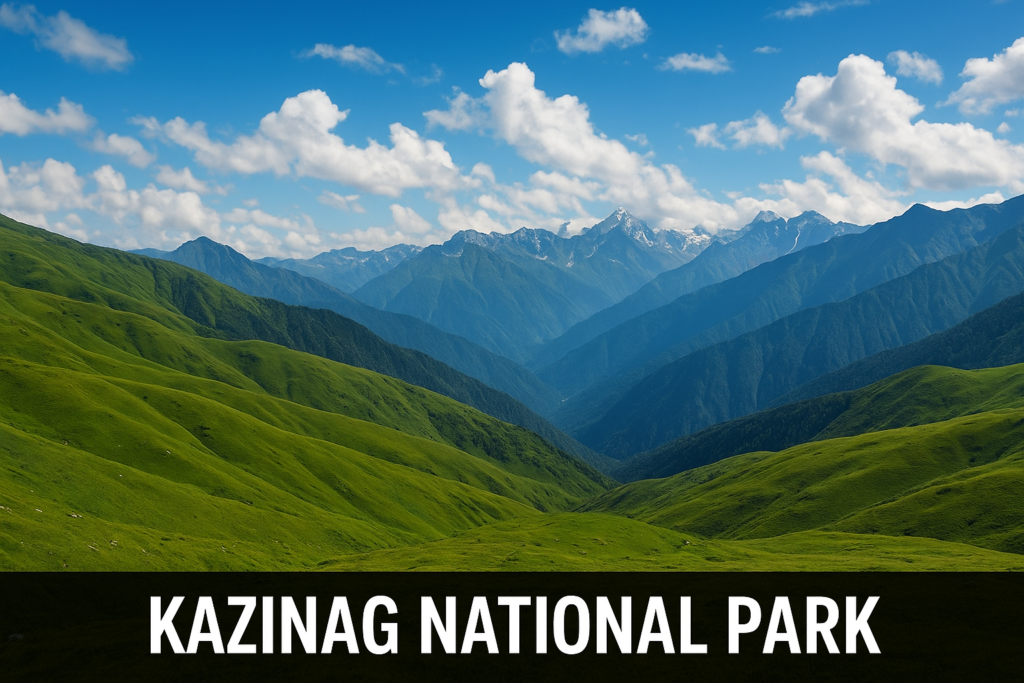HIGH‑Marks ALERT — National Parks in Jammu & Kashmir
Did you know? In the last 3–4 years JKSSB asked 17 questions specifically on National Parks in J&K. That single stat shows how important this topic is for JKSSB, JKPSC, UPSC and SSC aspirants.
What to focus (2‑minute checklist)
- Memorise: Park → District → Flagship species
- Know: Approx. area & notification year
- Remember: Unique features — LoC proximity, urban park, high‑altitude
Quick tip: Treat the 17 past questions as a blueprint — Examiners usually ask Location of Parks, flora and Fauna in National Parks, areas and notification years.
If you are preparing for competitive Exams, whether it is JKSSB, SSC, JKPSC or even UPSC, National Parks in an important Syllabus topic. Pick any Syllabus for JKSSB Exams, you will find this topic and what we have analysed that in the last 3 to 4 years, JKSSB has asked Questions from this topic in large numbers.
So, the probability of questions coming from this topic in the Upcoming JKSSB and JKPSC Exams is too high.
This article collects concise, exam-oriented facts on National Parks in the Union Territory of Jammu & Kashmir — their origin/formation, geography, flora & fauna, conservation importance and quick revision points that frequently appear in JKSSB, JKPSC, UPSC etc (in environment / biodiversity / static GK).
National Parks of Jammu and Kashmir: A Quick Tabular Overview
Table: 1 : National Parks of J&K along with Unique Flora and Key Fauna.
| National Park | Key Flora | Key Fauna (Exam-Focus Species) | IUCN Status Highlights |
|---|---|---|---|
| Dachigam NP | Wild Cherry, Oak, Conifers | Hangul (Kashmir Stag), Himalayan Black Bear, Leopard, Musk Deer, Himalayan Serow, Golden Eagle, Koklass Pheasant | Hangul: Critically Endangered (CR) |
| Kishtwar NP | Deodar, Fir, Alpine Meadows | Snow Leopard, Markhor, Himalayan Brown Bear, Asiatic Ibex, Markhor, Himalayan Musk Deer, Himalayan Tahr, Western Tragopan | Markhor: Near Threatened (NT) |
| Salim Ali NP | Willows, Poplars, Aquatic Vegetation | Migratory Waterfowl (Brahminy Duck, Pintail, Common Teak, Red-crested Pochard, eurasian Wigeon), Resident Birds (Kingfisher, Jacana, Grebe, Heron) Mammals (Flying Squirrel, Himalayan Jackal) | Urban wetland ecosystem |
| Kazinag NP | Conifers (Pine, Fir), Oak, Rhododendron | Pir Panjal Markhor, Himalayan Brown Bear, Hangul Corridor, Musk Deer, Leopard | Markhor: Near Threatened (NT) |
Table 2: National Parks – Core Administrative & Geographical Facts
| National Park | Location (District) | Area (km²) | Established | Key Exam Fact |
|---|---|---|---|---|
| Dachigam NP | Srinagar/Pulwama | 141 | 1981 | Hangul Conservation Hub (Only viable population) |
| Kishtwar NP | Kishtwar | 2,190.5 | 1981 | Critical Snow Leopard & Markhor habitat |
| Hemis NP | Leh (Ladakh) | 4,400 | 1981 | Largest NP in India; Prime Snow Leopard habitat |
| Salim Ali NP | Srinagar (Urban) | 9.07 | 1992 | Smallest NP in J&K; Urban wetland ecosystem |
| Kazinag NP | Baramulla | 425 | 2007 | Pir Panjal Markhor Stronghold; Trans-LoC corridor |
1. Dachigam National Park (Srinagar area) — key facts & origin

- Location & area: ~22 km from Srinagar city; area ≈ 141 km² (protected area historically).
- Origin/formation: Area protected since 1910 (Maharaja’s deer reserve / watershed for Srinagar); notified as a National Park in 1981. The park was originally created to protect the water supply and later became a wildlife reserve.
- Habitat & elevation: Temperate and sub-alpine zones — oak, conifer belts and alpine meadows.
- Flagship species: Hangul (Kashmir stag) — Dachigam is the principal and best-known refuge for this critically important and highly endangered cervid (endemic to the Valley). Other species include Himalayan black bear, musk deer, birds of temperate forests.
2. Kishtwar High-Altitude National Park (Kishtwar district) — key facts

- Location & area: Large high-altitude park in Kishtwar; area reported approximately ~2,190 km² in official district references (high-altitude mosaic — valleys to alpine terrains).
- Formation / objective: Created to conserve fragile high-altitude ecosystems and endangered mountain species (snow leopard, Himalayan musk deer, Himalayan brown bear etc.). The park protects remote habitats with sparse human population.
- Flora & fauna: Sub-alpine conifers, alpine meadows; fauna includes snow leopard, Himalayan musk deer, brown bear, various pheasants and high-altitude mammals.
- Exam tips: Link Kishtwar → high-altitude → snow leopard/musk deer for quick recall.
3. Kazinag National Park (Baramulla / Uri region) — key facts

- Location & area: Kazinag lies in the Baramulla district on the north bank of the Jhelum, near the Line of Control; area figures vary in sources (≈ 160 km² commonly cited; other official listings show smaller units aggregated as the park).
- Year / origin: Notified to protect the markhor (a rare wild goat) and associated Himalayan biodiversity; notification dates vary in sources , but as per J&K government sources it is 2007
- Flora & fauna: Deodar, fir, spruce, birch and alpine meadows; fauna includes markhor, Himalayan musk deer, Himalayan brown & black bears, monal, other pheasants and many bird species. Kazinag is also part of markhor conservation efforts and has transboundary significance.
4. City Forest (Salim Ali) National Park — Srinagar (small but important)

- Location & area: Small urban National Park in Srinagar (often called Salim Ali National Park / City Forest) — area ≈ 9.07 km² in many listings.
- Year: Notified in 1980s–1990s, depending on source (commonly quoted as 1986 in tourist / Incredible India material). The park was named after ornithologist Dr. Salim Ali and functions primarily as an urban biodiversity / bird habitat.
- Fauna: Important for resident and migratory birds; often taught as an example of urban / city forest protected area in J&K.
Hemis National Park : Ladakh, (Not in J&k)
Though Hemis National Park is now located in the Union Territory of Ladakh following the reorganisation of Jammu and Kashmir, it continues to be renowned for its unique characteristics, and that is why we study it alongside the National Parks of Jammu and Kashmir.
- Location & Geography: Located in the eastern Ladakh region (Leh district). Encompasses the catchments of the Markha, Sumdah, and Rumbak rivers (tributaries of the Indus). The Largest National Park in India.
- History: Named after the famous Hemis Monastery. Declared a National Park in 1981.
- Flora: Predominantly sparse due to the cold desert climate. Supports alpine steppe vegetation, cushion plants, and hardy grasses/shrubs along riverine areas (e.g., Seabuckthorn, Caragana).
- Fauna (Flagship & Key Species):
- Snow Leopard: Holds one of the highest densities of Snow Leopards globally. Prime habitat.
- Tibetan Wolf
- Eurasian Brown Bear
- Red Fox
- Asiatic Ibex
- Bharal (Blue Sheep): Primary prey for Snow Leopard.
- Argali (Great Tibetan Sheep): Ovis ammon – Near Threatened, the world’s largest wild sheep.
- Golden Eagle
- Lammergeier (Bearded Vulture)
- Conservation Challenges & Initiatives:
- Challenges: Extreme climate, vast and remote area, limited water resources, livestock competition, tourism pressure near core zones.
- Initiatives: Core area of Project Snow Leopard; strong involvement of local communities (Hemis NP is a model for community-based conservation); research and monitoring programs (e.g., Snow Leopard Conservancy).

Pingback: Full List of Trees of Jammu and Kashmir with MCQ's - JKSSB Edge